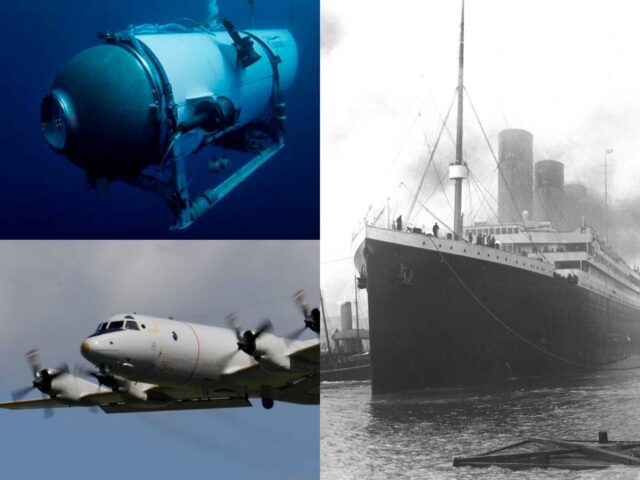Sonar buoys deployed to help search for a submarine that went missing while diving to the wreck of the Titanic have detected “underwater noises”, prompting a shift in the search area, but the time left to save lives based on the oxygen supply aboard is nearly up.
A small submarine carrying five men lost contact with the surface while diving to the wreck site of the famous passenger liner RMS Titanic on Sunday morning, triggering a search involving the U.S. and Canadian Coastguards, as well as civilian vessels, in a race against time assuming the craft’s onboard oxygen supply is operating as intended. When it dived, the Titan submersible was carrying emergency oxygen for 96 hours, meaning in the very best-case scenario rescuers have until Thursday morning to find the craft.
British Billionaire Adventurer Among Those Missing on Titanic Submarinehttps://t.co/LgEsJqEGnL
— Breitbart London (@BreitbartLondon) June 20, 2023
While some observers have noted the vastness of the ocean and the huge depths involved make a successful recovery tragically unlikely, sonar buoys deployed to search beneath the sea to perform underwater acoustic searches with their parent P3 Orion aircraft have detected noise in the search area. The U.S. Coastguard said in a statement this morning that: “Canadian P-3 aircraft detected underwater noises in the search area. As a result, [Remote Operated Vehicle] operations were relocated in an attempt to explore the origin of the noises.”
While that refocussed search had yet to deliver results, searches are ongoing, the Coastguard said and the data had been passed to “Navy experts for further analysis”.
The noise has been described as “banging sounds in the area every 30 minutes”. UK broadcaster GB news goes further, citing unnamed “well connected sources” who allegedly say the banging is in fact the sound of ‘SOS’ being tapped out in Morse code, which in the words of that source demonstrates “the passengers onboard the submersible are very much alive and are calling for help”.
That claim has not been publicly discussed by rescue authorities.
Even if the submarine is found, recovering the craft and crew presents a major challenge. The water in which the RMS Titanic was lost in 1912 is exceptionally deep, at around 12,500 feet, considerably deeper than the maximum official diving depth of even the most advanced military submarines, assuming the craft has made its way to the ocean floor.

COMMENTS
Please let us know if you're having issues with commenting.